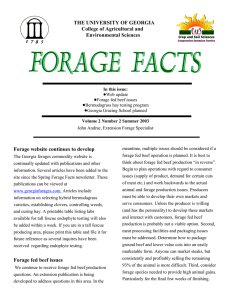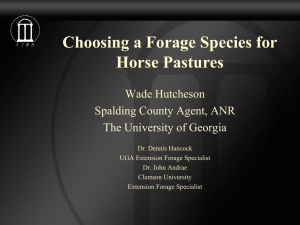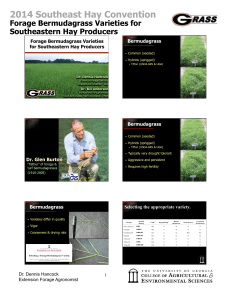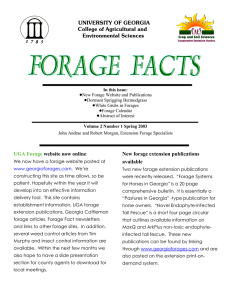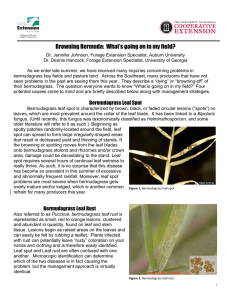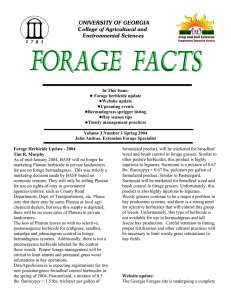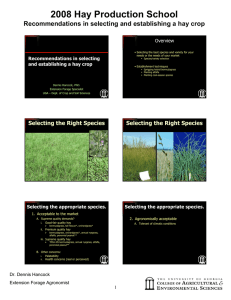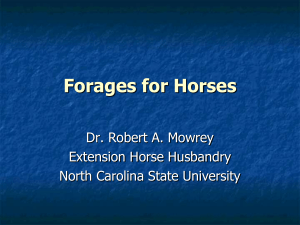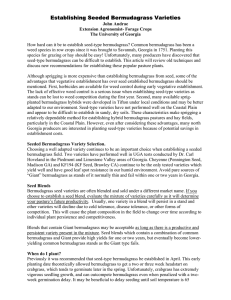UNIVERSITY OF GEORGIA College of Agricultural and Environmental Sciences
advertisement
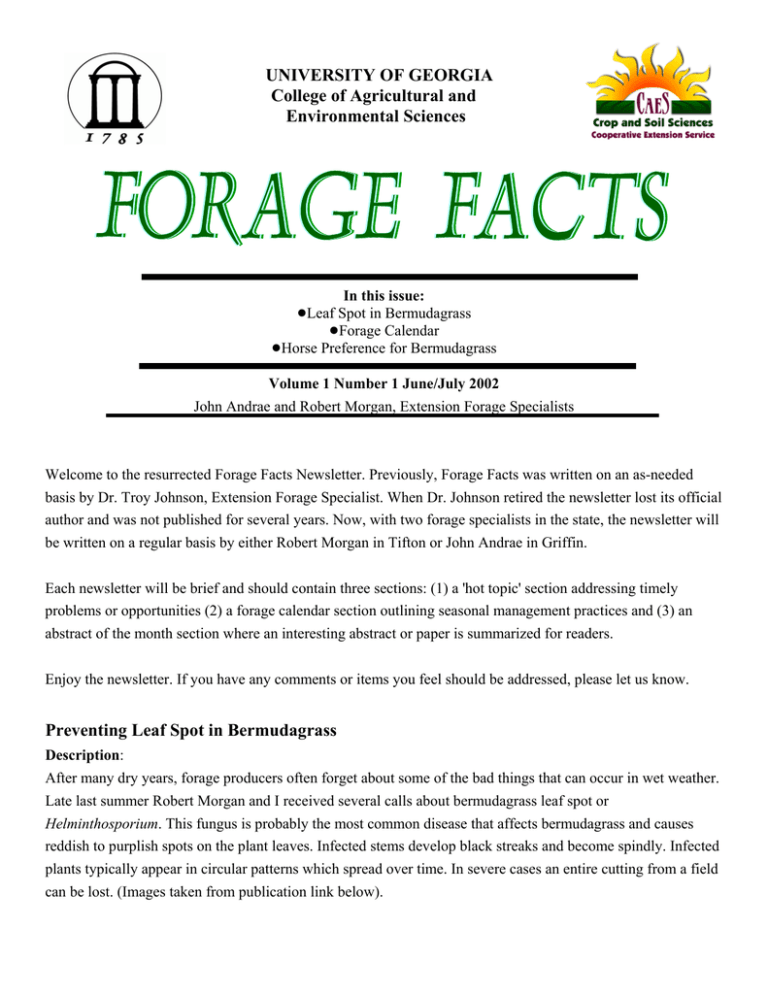
UNIVERSITY OF GEORGIA College of Agricultural and Environmental Sciences In this issue: !Leaf Spot in Bermudagrass !Forage Calendar !Horse Preference for Bermudagrass Volume 1 Number 1 June/July 2002 John Andrae and Robert Morgan, Extension Forage Specialists Welcome to the resurrected Forage Facts Newsletter. Previously, Forage Facts was written on an as-needed basis by Dr. Troy Johnson, Extension Forage Specialist. When Dr. Johnson retired the newsletter lost its official author and was not published for several years. Now, with two forage specialists in the state, the newsletter will be written on a regular basis by either Robert Morgan in Tifton or John Andrae in Griffin. Each newsletter will be brief and should contain three sections: (1) a 'hot topic' section addressing timely problems or opportunities (2) a forage calendar section outlining seasonal management practices and (3) an abstract of the month section where an interesting abstract or paper is summarized for readers. Enjoy the newsletter. If you have any comments or items you feel should be addressed, please let us know. Preventing Leaf Spot in Bermudagrass Description: After many dry years, forage producers often forget about some of the bad things that can occur in wet weather. Late last summer Robert Morgan and I received several calls about bermudagrass leaf spot or Helminthosporium. This fungus is probably the most common disease that affects bermudagrass and causes reddish to purplish spots on the plant leaves. Infected stems develop black streaks and become spindly. Infected plants typically appear in circular patterns which spread over time. In severe cases an entire cutting from a field can be lost. (Images taken from publication link below). C Control: The simplest control is to sprig varieties that are not susceptible to leaf spot. Current varieties with good resistance include Coastal, Tifton 85, Tifton 44 and Russell. Alicia and common bermudagrass are typically very susceptible to leaf spot. Low soil potassium levels also predispose bermudagrass to leaf spot. To determine if soil fertility is a problem, Dr. Don Ball of Auburn University recommends submitting plants for a leaf tissue analysis. If bermudagrass contains less than 1.7% K, addition of K fertilizer should be a high priority. Spittlebugs can also predispose bermudagrass to leafspot and can be controlled by burning bermudagrass 3-4 weeks prior to greenup or with methyl parathion or sevin. Infected plants can be harvested, although forage quality will be decreased. There are no fungicides labelled for forage crops. For more information see http://www.ces.uga.edu/Agriculture/plantpath/plantdis/fungi/Helminthosporium.html Forage Calendar: Remember to 'cut on the calendar' for high quality hay. Bermudagrass harvested every 4-5 weeks will be high quality. Millets and sorghum-sudan can be planted, but be careful of nitrate accumulation in droughty conditions or in high fertility situations.. Abstract of the Month: Horse preferences of five bermudagrass hay varieties. G. Heusner, N. Degenhart, and G. Burton. 14th Equine Nutrition and Physiology Symposium Proceedings. Coastal, Coastcross 1, Tifton 44, Tifton 78 and Tifton 85 were evaluated in the early 1990s to determine the relationships between bermudagrass morphology, nutrient content and horse preference. Mature horses were offered hay of the different varieties in a cafeteria style study. Hay consumption was as follows: Coastal 7.52 lbs/day, Tifton 44 4.95 lbs/day, Tifton 78 4.07 lbs/day, Tifton 85 1.43 lbs/day, and Coastcross I 1.63 lbs/day. Coastal was the only variety stated to be significantly greater than other varieties. Correlations suggested that horses preferred low NDF content, narrow leaf blades, small stems and short leaves. NOTE: Horse preference means little about nutritional content of hay. If horses are not allowed a choice, they will readily consume any of these varieties. In fact, Tifton 85 regularly will have higher digestible nutrient content than other bermudagrass varieties. Hay selection should be based on nutritional analysis.
